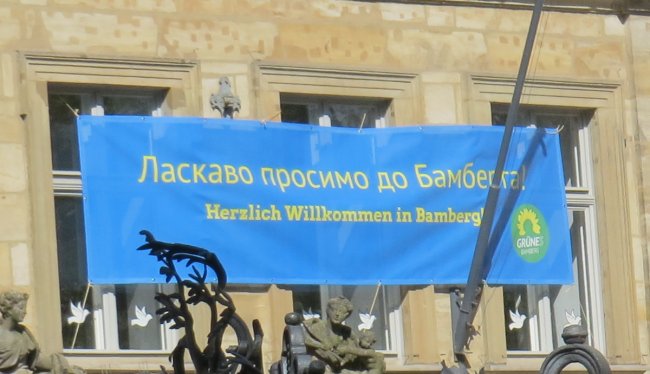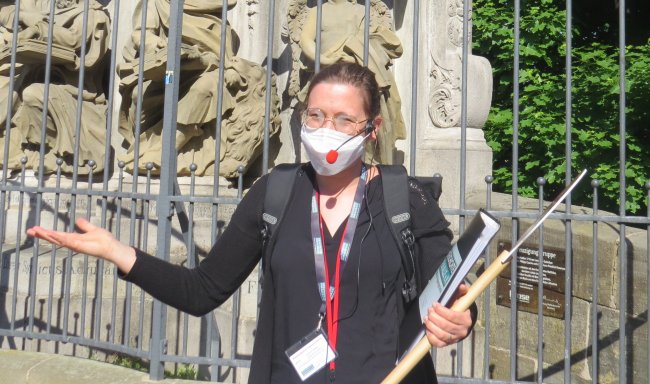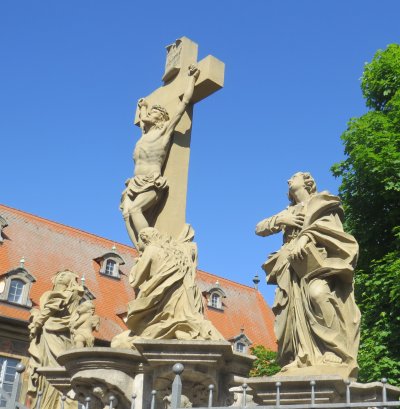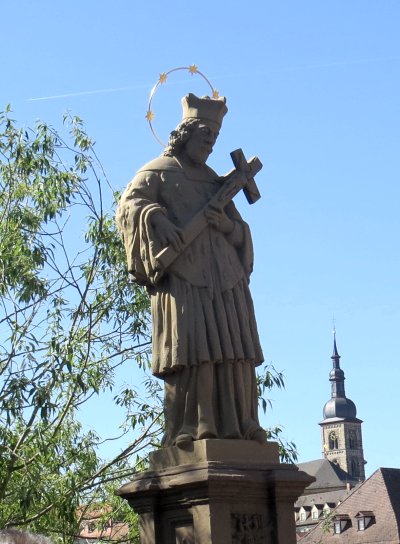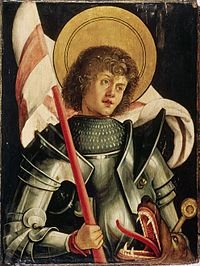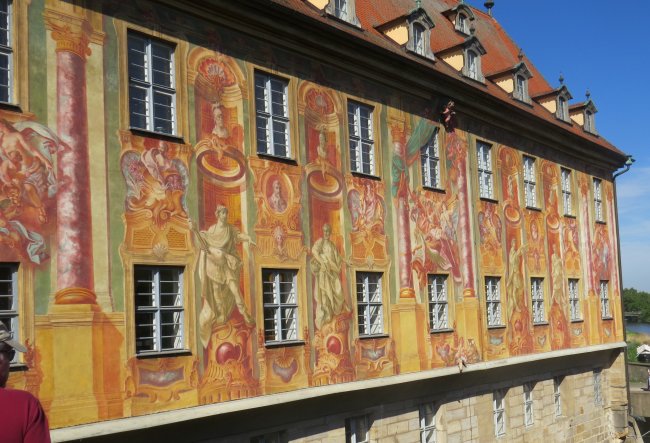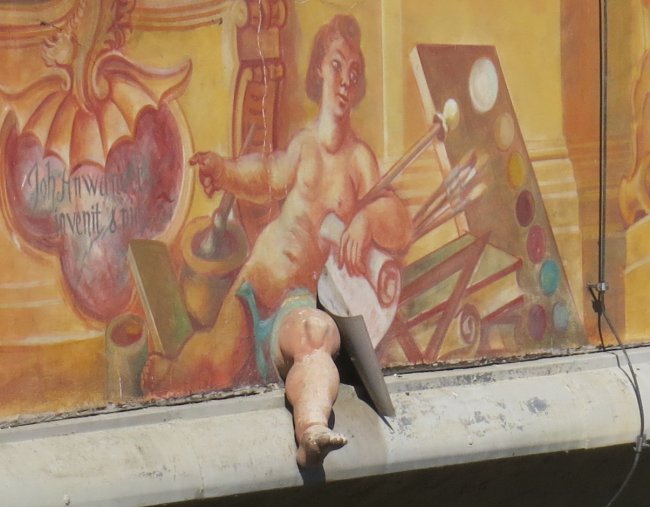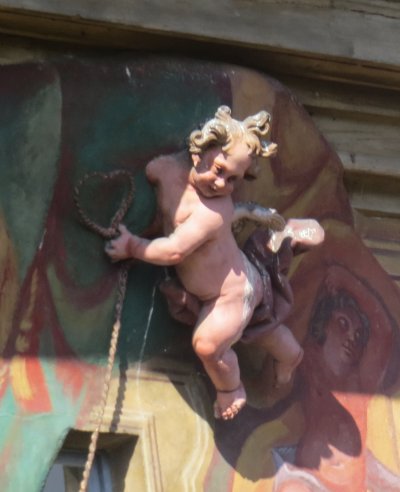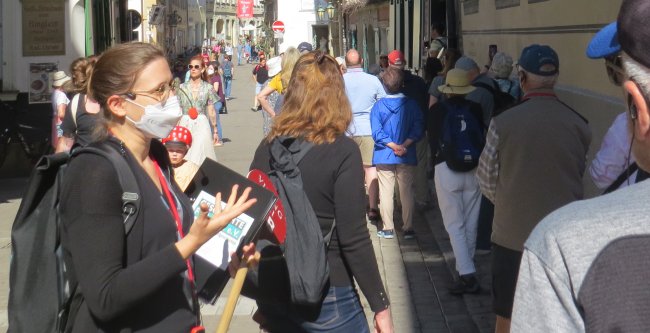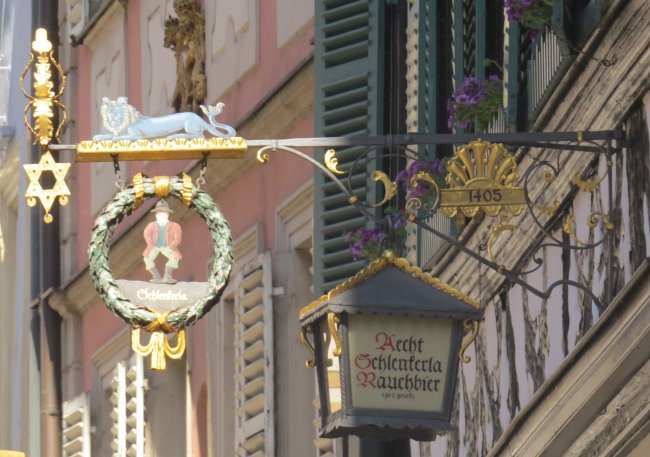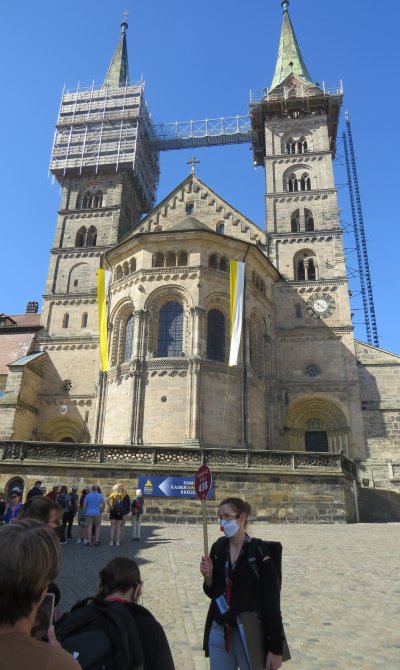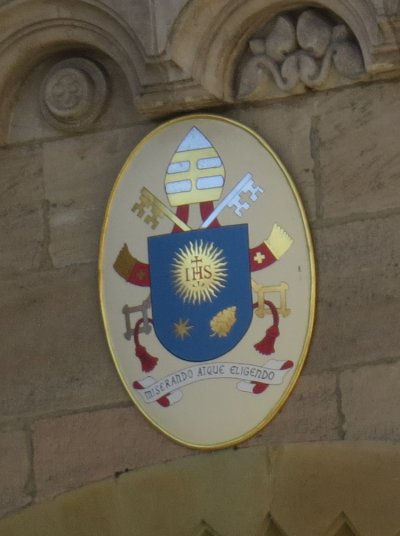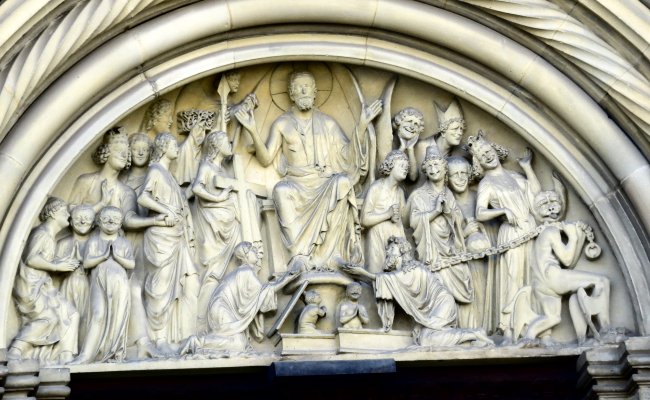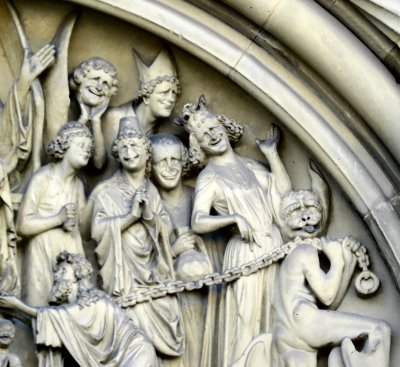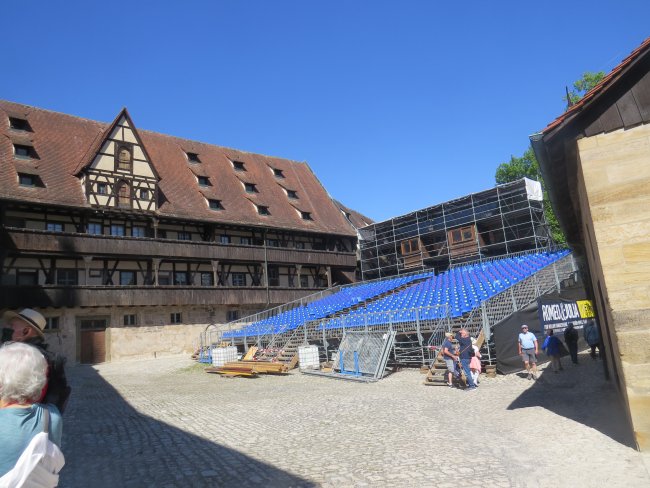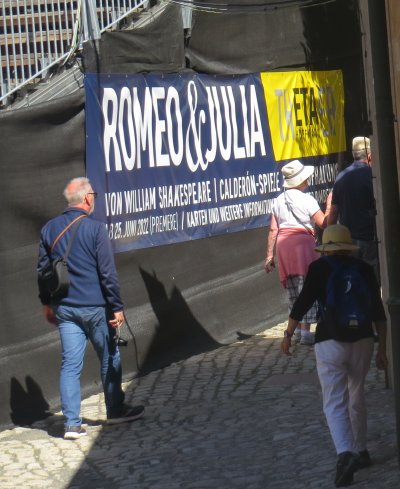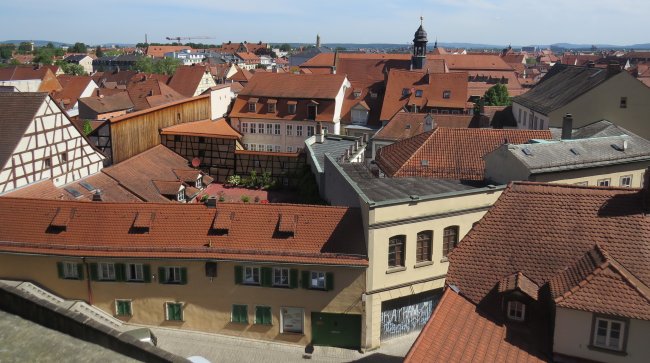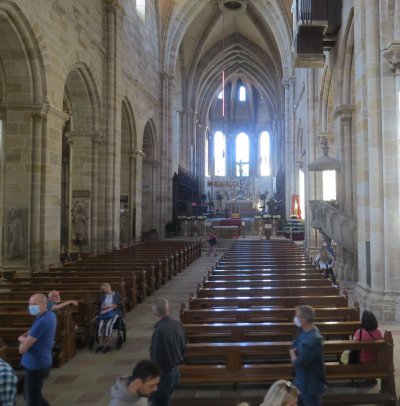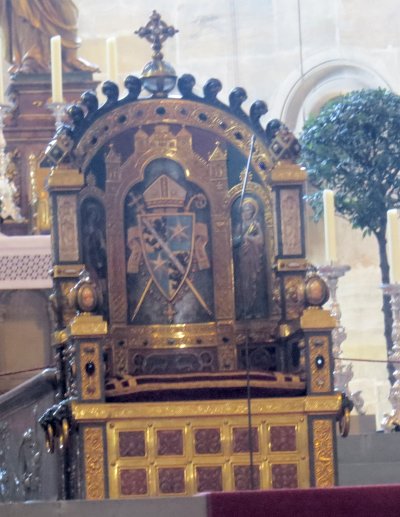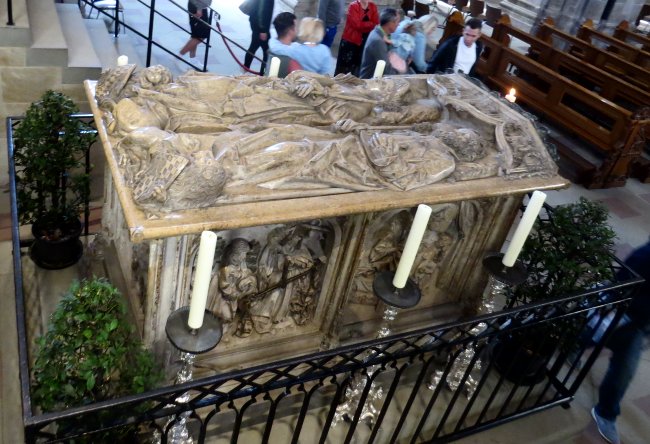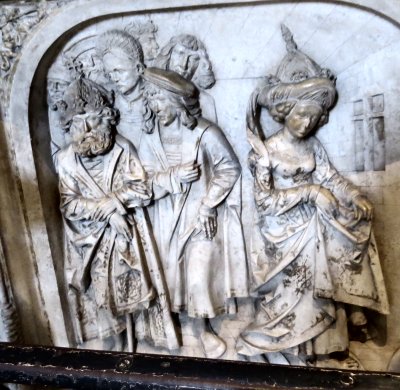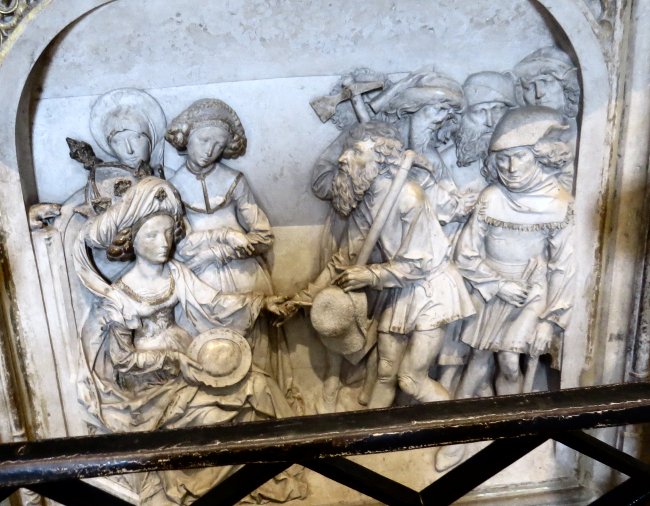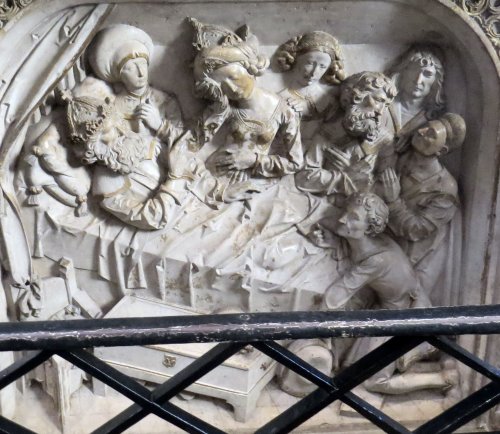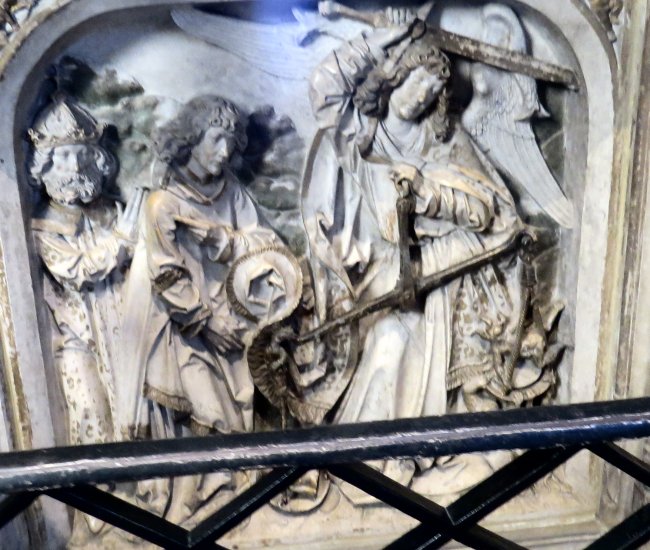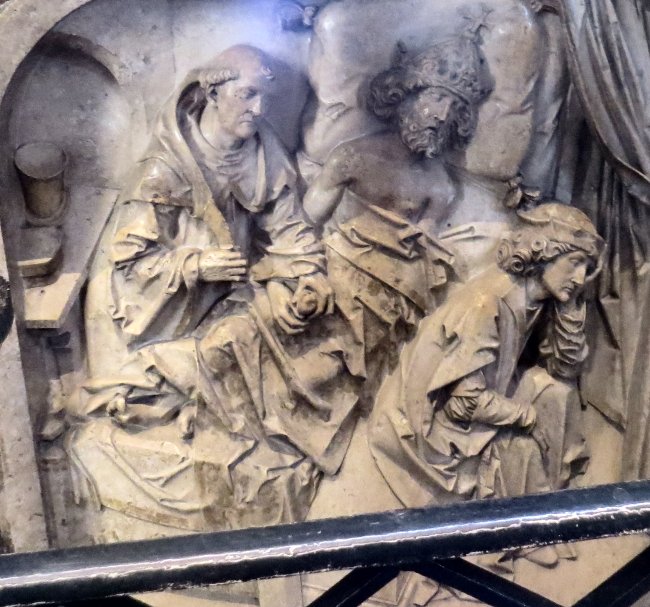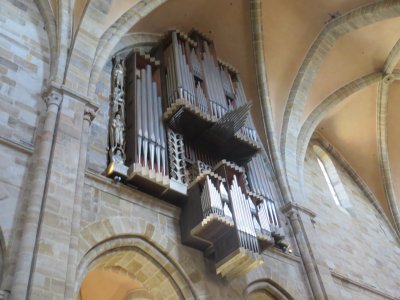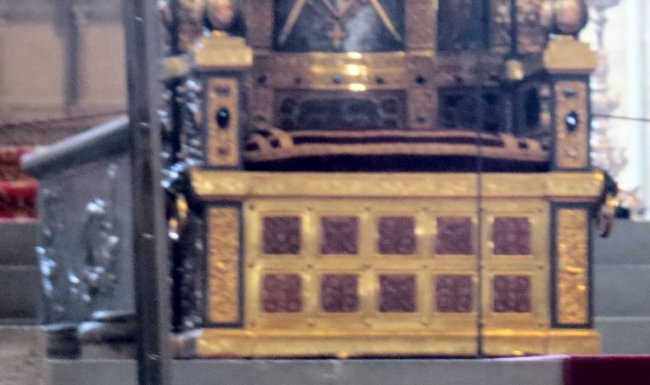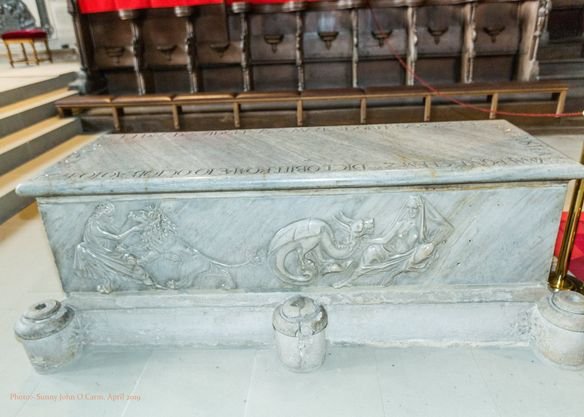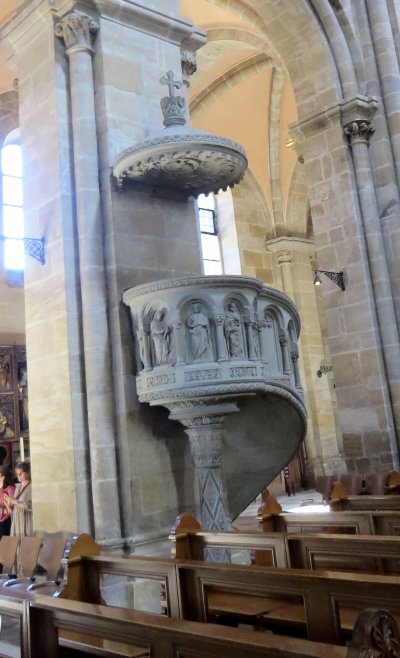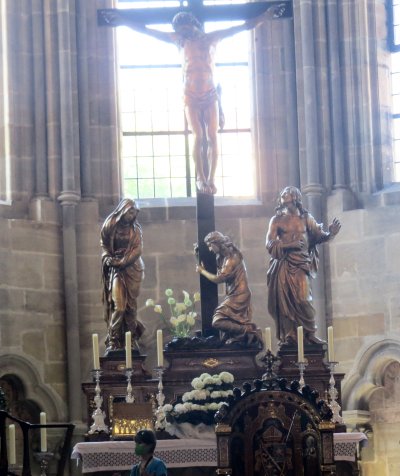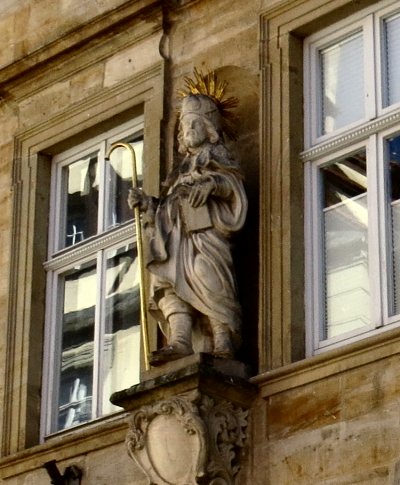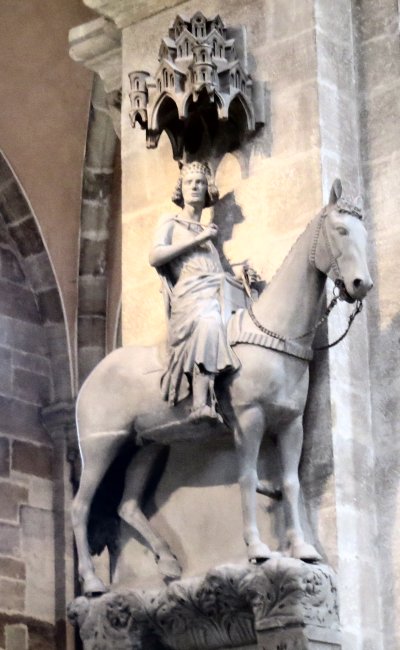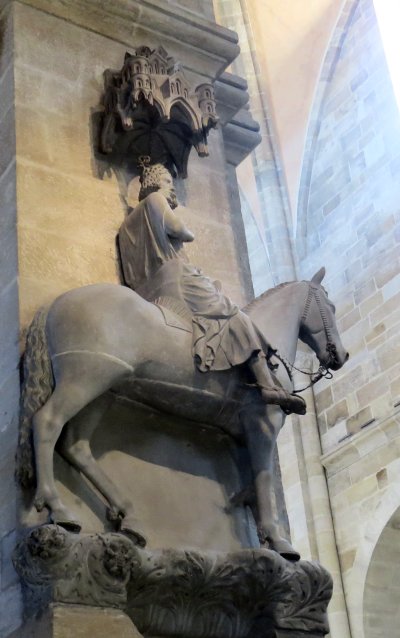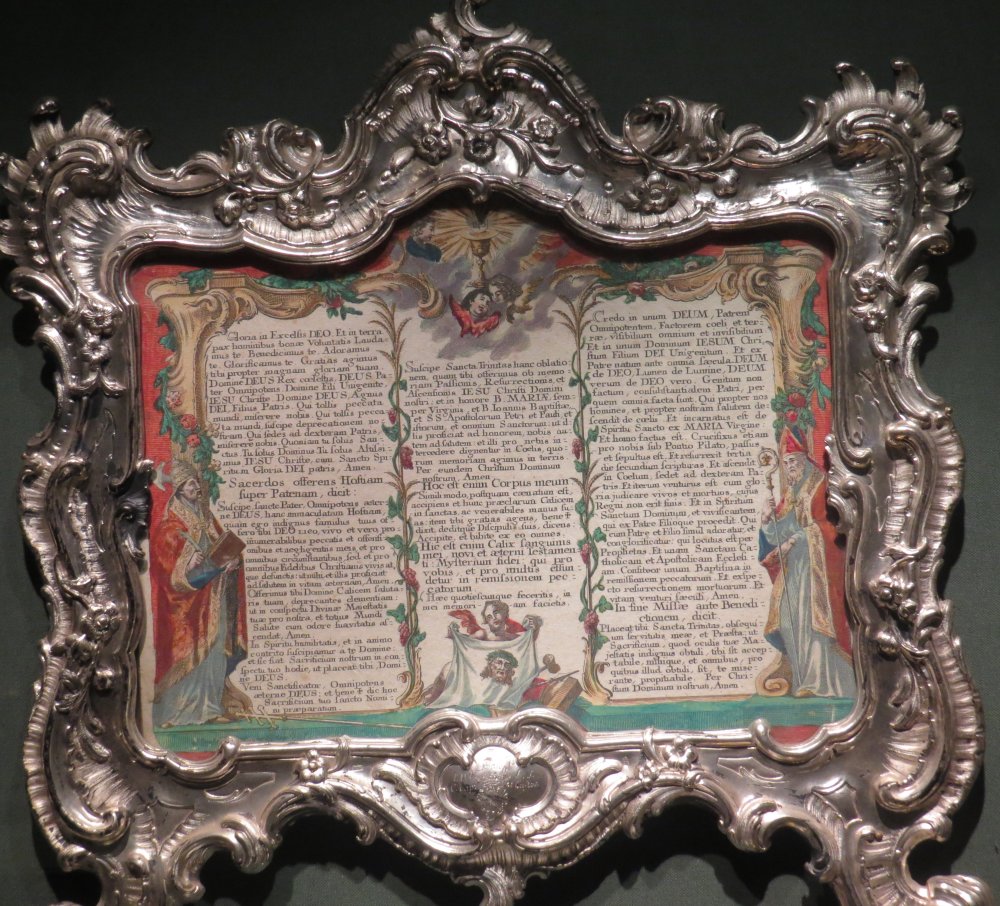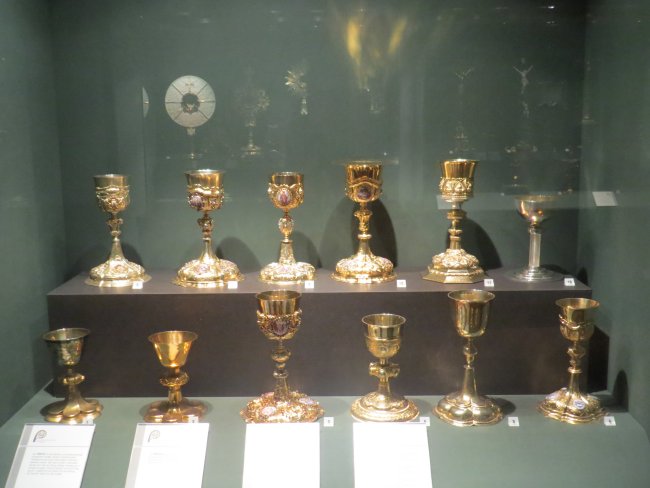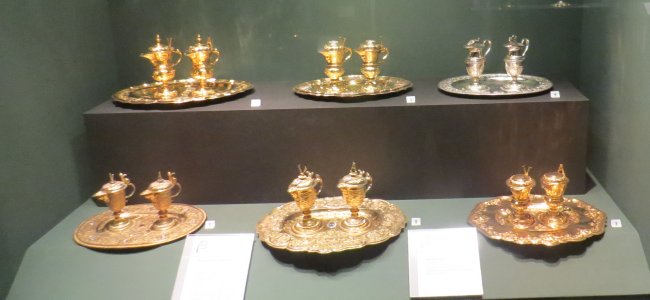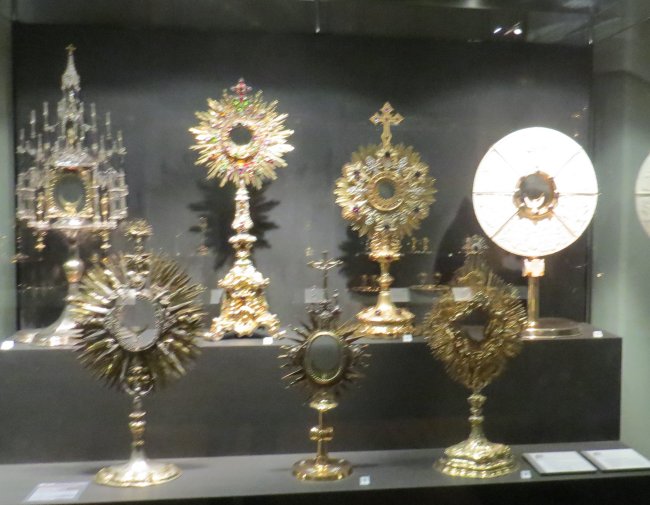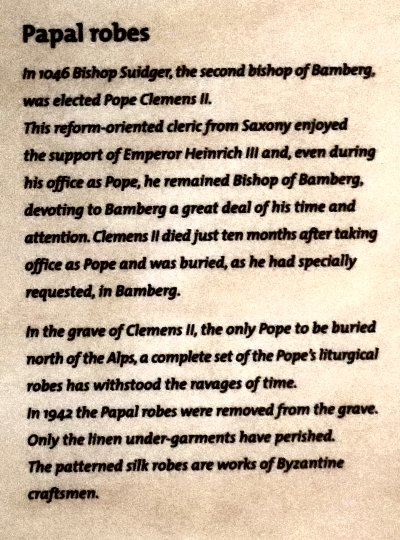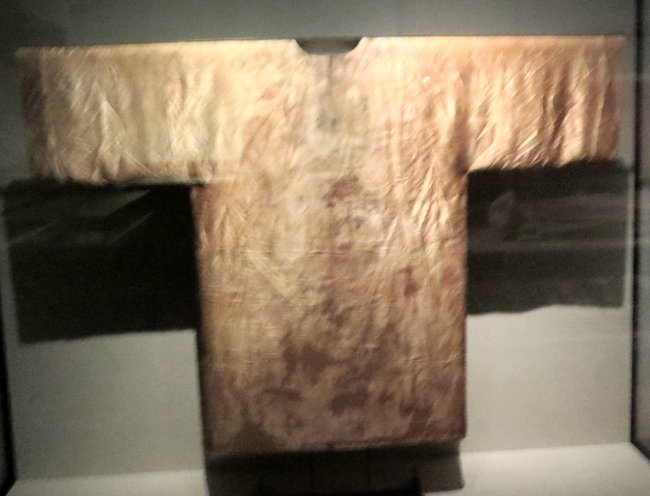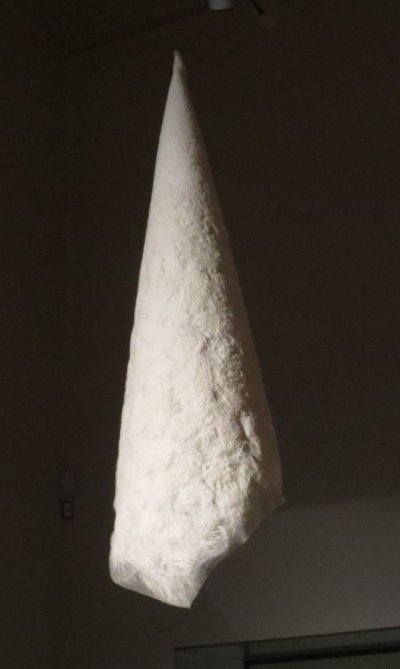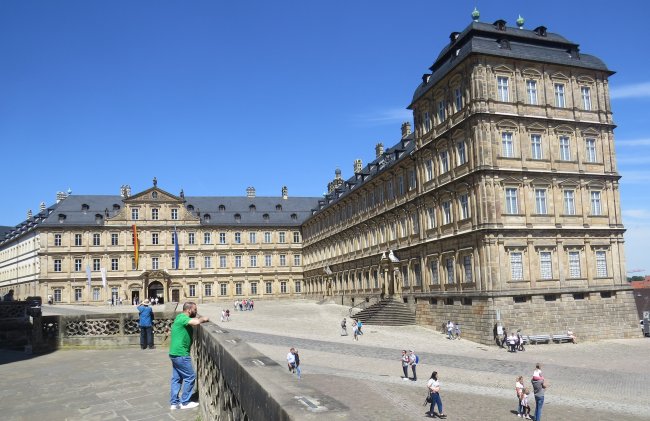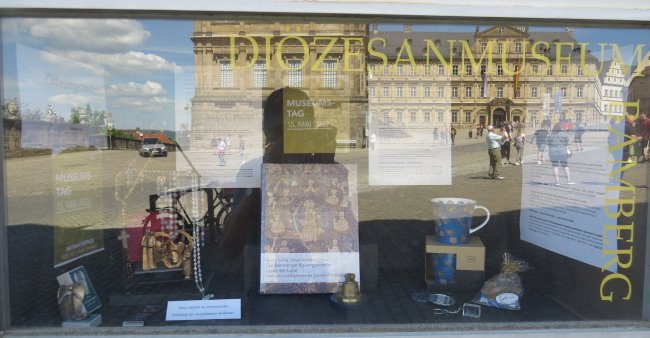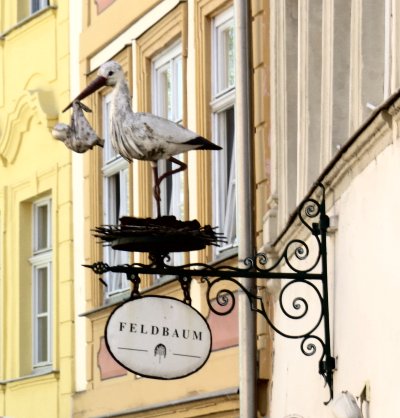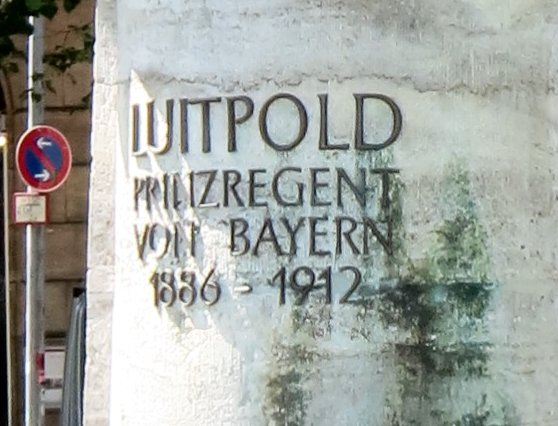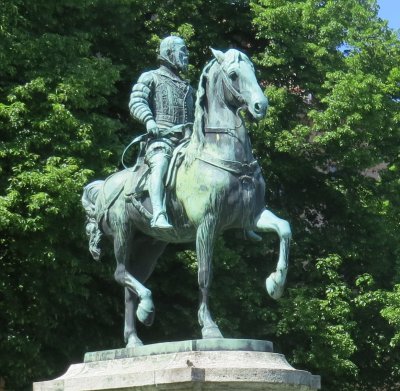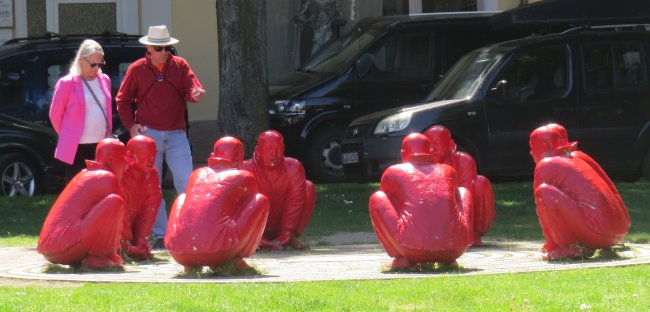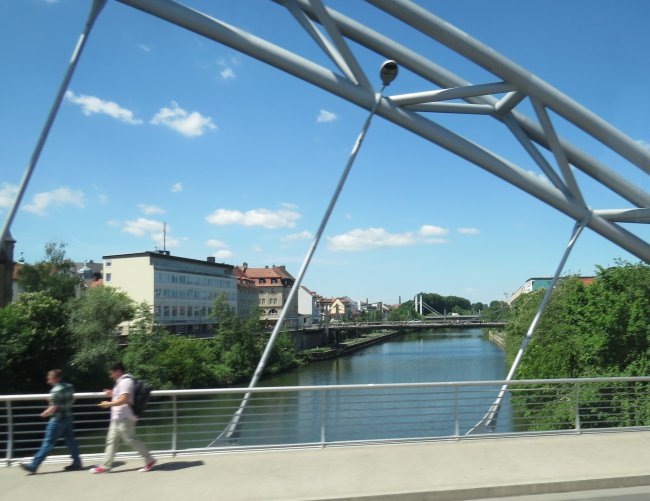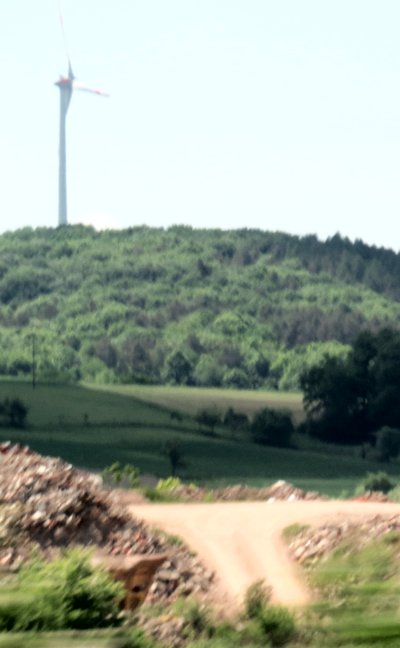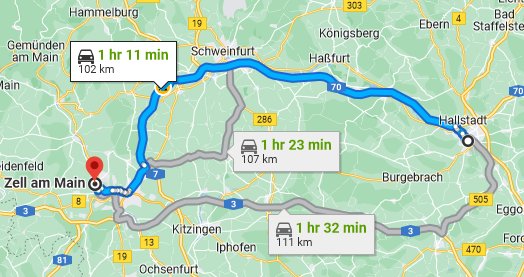Before the excursion : I woke up at 3:40 a.m., and I never went back to sleep. I checked my email repeatedly. Sue had not yet responded.
I went to breakfast fairly early. A woman named Margaret asked to sit with me. She told me that she was currently living in Denver, but she was originally from Miles City, MT. I recognized that as the destination of the cattle drive in my favorite novel of all time, Larry McMurty's Lonesome Dove. I said as much, and she confirmed it
She then said that she was traveling with her fifty-year old son, Jason. She asked me if I had any family. I explained about Sue's passport and mentioned that my only sibling doesn't talk to me. She said that her daughter was the same way. She had reportedly called Margaret "poison" in their final blow-up.
The most amazing thing about Margaret was that she did not know that our ship was about to enter Bamberg and did not care at all. I don't think that she went on any excursions. I don't remember ever seeing her again.
The walking tour of Bamberg: : The ship provided us with the map of Bamberg shown below. The small blue arrow at the very top indicates where the ship docked on the canal. Buses transported us to the vicinity of the Hotel Messerschmitt, which was on the right edge of the map, about halfway up. That was where we met after the tour as well. While we were touring the town of 70,000+ inhabitants, the ship negotiated the remaining locks on the canal and docked at Zell am Main.
I keyed this fragment into the document containing my notes for the day: "The tour guide for the B group, who was also a member of the historical group." It must have meant something to me then, but I could not make heads or tails of it seven weeks later when I commenced working on this page. I did not even write down the guide's name, and my recollection of her now had grown pretty dim. It might have been Katerina,[1] or something like that.
I wore my sweatshirt in the morning, but I took it off almost as soon as I climbed down from the bus in Inselstatt, the area that lies between the canal and the Regnitz River.
We began the tour by walking toward the bridge that leads to the Old Town. Katerina explained that the town was literally put on the map by Holy Roman Emperor Henry II, who reigned in the early years of the eleventh century. He planned to construct a new church on each of the area's seven hills. He was inspired by Rome, which also contained seven hills. In Bamberg there were still churches atop each hill in 2022.
For some reason the city was spared the bombing that destroyed much of Nuremberg. The Viking Daily said that it "had the largest repository of retained medieval structures in its remarkably preserved Old Town; because of this, it was named a UNESCO World Heritage Site in 1993."
Holy Roman Emperor Henry II and his wife Cunigunde were both crowned by Pope Benedict VIII[2] in 1014 in Rome. Although both of them were long ago canonized as saints, Cunigunde seemed to be much more popular in Bamberg. We saw several statues of her throughout the tour.
I asked Katerina if the statue on the bridge of a guy with a crown and a halo was Henry II. She claimed that it was not, and that it was actually St. George. This seemed really bizarre to me. St. George was by all accounts a Roman soldier in the fourth century who refused to give up his Christian faith. He was always depicted as a soldier, and there was almost always a dragon around. This statue was nothing like that. On the other hand, tour guides would never just make stuff up, would they?
Wikipedia used the image shown at left on its page about St. George. I would like to know where he bought that suit of armor in the fourth century.
Cunigunde wend Henry II are both entombed in the rear of the Cathedral of St. Peter and St. George, which everyone called the Dom.
The Altes Rathaus (old town hall) dates from 1462. At the time the town was ruled by a prince-bishop. The legend is that the citizens wanted a town hall and petitioned the bishop for one. He reportedly agreed to the request, but he said that they could not build it on his land, which was all of the land of the city. The citizens allegedly created an artificial island in the river, and that is where the Rathaus still stood in 2022.
The murals on the side of the buildings were certainly startling.
After crossing the bridge we almost immediately passed a famous establishment that brewed and sold Rauchbier, the famous local brew with the smokey taste. Katerina professed not to like it. She said that it was like drinking from an ashtray. Several men already were drinking mugs of the brew at about 11 a.m. I did not try it, but I bet that Tom Corcoran would have if he had been with me.
Katerina showed us the depiction of the Last Judgment over the entrance to the Dom. The condemned on Jesus's left were happily enjoying the occasion as they were led off by devils. We did not go inside.Katerina also mentioned that Pope Clement II's remains were entombed in the Dom. No other pope was buried north of the Alps. I already knew this, and for months I had planned on spending most of my free time inside the Dom trying to snap photographs of his sarcophagus and the resting place of the two saintly imperial rulers.
From the Dom we walked to a square in which some temporary seating had been put up. Katerina informed us that a production of Shakespeare's Romeo und Julia would be performed (in German) a little later in the Summer.
She also showed us where a scene from the most recent cinematic version of The Three Musketeers was filmed. She said that everyone in Bamberg had been excited that Rolando Bloom would be in town, but only his stunt double came.
She then produced a large color photo of the scene. Half of it matched what we were looking at, but the backdrop had been changed completely so that it appeared to take place at the ocean.
That was the end of the tour. Bamberg was a feast for the eyes, and the weather and lighting were ideal on that occasion. I was happy, however, that for once we had enough time to go snooping on our own. I returned to the Dom and went inside.
I am very happy to report that the cathedral did not charge for entry, and the only restrictions on photography were that it be for private use. The interior of the church is what I had come to expect from Gothic churches—dim lighting with minimal decoration.
The tomb of Henry II and Cunigunde was easy to find in the St. George chancery, which is near the entrance at the rear of the church. It was nothing short of spectacular. I climbed up as high as was allowed into the chancery and photographed it from above.
I then made my way around it and took photos of the detailed scenes on all sides of the sarcophagus. Other visitors were there; I sometimes needed to wait until I had an unobstructed view before I took each shot.
Knowing that the sarcophagus of Clement II was at the other end of the church in what is called the St. Peter chancery, I walked as far as I could toward the high altar at the far end of the nave. I got less than halfway there before I reached the barrier that prohibited further entry
I was close enough to take a pretty good photograph of the bishop's cathedra, but where was Pope Clement II's sarcophagus? When I positioned myself to the far left side of the surprisingly narrow church, I thought that I could see a light grey object behind the cathedra. When I looked through the viewfinder of my camera and zoomed in, I was pretty sure that I had found it. I took the best photo that I could under the circumstances.
Most of the online material about Clement II calls him a reformer and mentions that he maintained his bishopric of Bamberg after being elected pope at the Council of Sutri in 1046. Don't get me started.[3]
Being able to photograph that one side of the sarcophagus put me in a surprisingly good mood. I took a few more photos of the interior of the church before returning to the area called the St. George chancel.
The most famous statue in Bamberg is "The Rider", which is from the thirteenth century. It is considered the first equestrian statue since antiquity and the first ever with a horseshoe. The identity of the person on the horse is disputed.
When I finally left the church I noticed that the diocese operated a museum in a nearby building. I entered and bought a ticket. What a good idea that was! On display were many gold and silver objects that had been used in masses over the centuries. Reading the words on the framed document above brought back many memories from my twelve years of Catholic school.
If the altar boys at Queen of the Holy Rosary School had been entrusted with any of those golden cruets something untoward would likely have occurred.
Holy mackerel! I would not trade my photo of the burial robe of Pope Clement II for a thousand photos of his sarcophagus from every imaginable angle.
If you have any idea what the conical cloth object might be, please let me know.
There were other exhibits in the museum as well. I remember that they had photos of all of the recent bishops. I did not take any photos of the other exhibits because a museum employee told me a few minutes after I took the photo if the conical whatever-it-is that photography was not allowed. Maybe not, but there was no sign indicating as much, and my easily noticeable camera had been strapped around my neck when I bought the ticket. I don't know what I would have done if she had asked me to delete the photos that I had already taken, I might have made a run for it.
I still had one item on my to-do list: buying some ibuprofen. I had not felt much pain, but I wanted to be prepared, and I needed smaller denominations for tips.
I found an apotheke that did not seem too intimidating. I had looked up the pronunciation of the drug in German on the Internet. The first two syllables were pronounced EE boo. I told the clerk what I wanted. She understood and brought me a package of a dozen tablets that cost €2, which is about what I had paid at CVS for a bottle of 500 tablets that I had neglected to pack for the trip. Oh, well.
The bus ride to Zell was long, uneventful, and boring. I don't know why I was so intent upon getting a photo of the windmill. I had seen surprisingly few in the first nine days of cruising, but I saw plenty more before the cruise was over.
After the excursion: : Lunch was served at 1:30. I joined Mike and Vivienne Barke at their table. Mike and I both ordered the flounder. It was flaky and tastier than I had expected. I don't remember what Vivienne ate. At lunch I always drank iced tea.
I was excited to talk about my successful search for objects associated with Pope Clement II. I did not give all the details of what I knew about him. I just explained that the talk of him as a reformer was less accurate than my description of him as the emperor's lapdog.
On the previous day they had taken the tour of the cellars and tunnels of Nuremberg. They said that it was absolutely fascinating. Vivienne said that she had remarked at the time, "Mike would have really liked this."
This, of course, reinforced the notion that I had squandered an important opportunity in Nuremberg. As they say in bridge, "Next hand."
I took a nap after lunch. Afterwards I keyed into my journal document for Day 9 as much as I could remember about the day's experiences.
I listened to Gary's talk at 6:45. I did not get much out of it because I had already purchased a ticket for the Rothenburg trip, which would take up most of the day. As usual, Gary gave his opinion that Rothenburg was a more interesting medieval city than Regensburg. After today's experience, I wondered why Bamberg was not a contender, too. I was hoping to get some Covid news, but he provided no update.
I ate supper by myself. I had some kind of soup, very tasty lamb chops and potatoes, and apple crisp with vanilla ice cream for dessert. I also had a glass or two of red wine.
I received a short e-mail from Sue that said that a bridge player whom we both knew had died after a long illness. It also mentioned that the driving range for golfers that had been up the street for us for over three decades would be transformed into a solar farm.
I decided to skip the "fun music quiz" at 9 p.m. Instead I fell asleep reading my book.
[1] I used a variable for her name on this web page. So, if I discover that it was something else, I only need to change one line of code.
[2] If I ever knew that Benedict VIII had visited Bamberg, I had forgotten about it. He arrived in 1020 to consecrate the new cathedral. Benedict and his brother and successor, Pope John XIX, provided significant support to the young diocese. There was a third brother, Alberic, one of whose sons became Pope Benedict IX, the successor to John XIX. The three oversaw the Church from 1012-1048 with two short interruptions.
[3] My historical novel Ben 9 includes this series of events. The relevant material is in chapter 9, which is posted here. Suidger had been the loyal Prince-Bishop of Bamberg for a few years when Emperor Henry III (no relation to Henry II, who had no offspring) brought him along on his sojourn to Italy in 1046. The emperor also brought his army.
Henry III had a bee in his bonnet about the state of the papacy. The current pope, Gregory VI, had paid the previous pope (who had been canonically elected as Pope Benedict IX more than fourteen years earlier) an undisclosed sum before he assumed the pontificate. That young man who made way for him wanted to get married, and so he resigned. No previous pope is known to have resigned.
Henry III called a council of terrified bishops at Sutri. He made it clear that they were to depose both Benedict IX and Gregory VI, as well as a pretender who had earlier seized the papacy for a few months before being ousted from Rome by supporters of Benedict IX. The council also went along with Henry III's strong recommendation to elect Suidger as Pope Clement II.
That Clement II refused to give up his other bishopric was against all canonical law and custom. The pope is Bishop of Rome full stop. No other pope ever was so audacious. After crowning Henry III as emperor, Clement II returned to Germany with the emperor and (as a prisoner) Gregory VI. Suidger/Clement was never in Rome again. His pontificate lasted only ten months. When he died, Benedict IX became pope again. No one seems to know what had scuttled his marriage plans.
Any "reforms" that Clement II supported were almost certainly suggested by Henry III. Most involved allowing the emperor to assume the right to appoint bishops in the empire. This episode was about imperial politics, not clerical reform.



